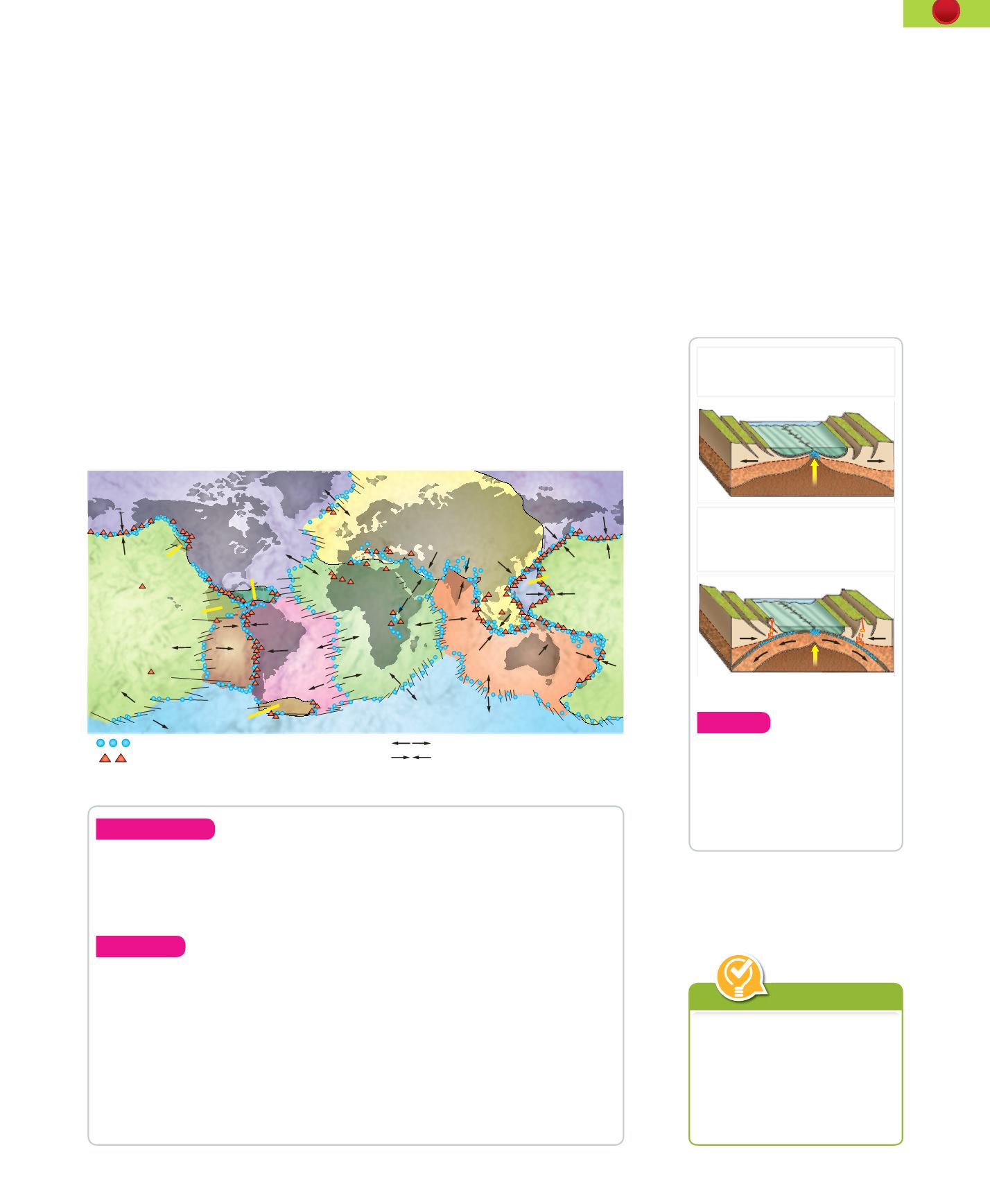
11
1. Internal geological processes
www
Key concepts
❚❚
Earthquakes and volcanoes
are the most visible signs of
the Earth’s internal activity.
❚❚
Both of these events are
related to lithospheric plate
boundaries.
3.3.
Location of earthquakes and volcanoes around
the planet
Earthquakes are not distributed randomly on the Earth’s surface; they are grouped
together in
earthquake belts
. Active volcanoes are also located in these belts.
This is because the lithosphere, the rigid outer layer of the mantle, lies on the
thick liquid lower layer where convection currents are formed. The lithosphere is
divided into great blocks called
lithospheric plates
. These plates move due to
the convention currents and interact, colliding
4
with each other, or sliding
5
laterally
and causing
earthquakes
. The plate boundaries coincide with the earthquake and
volcanic belts and are the areas where Earth’s internal activity is most evident. In
fact, 95% of earthquakes take place near these plate boundaries and 80%, in the
Ring of Fire that surrounds the Pacific Ocean.
❚❚
In
divergent boundaries
, where the plates separate, the lithosphere becomes
thinner and fractures open which allow magma to rise.
❚❚
In
convergent boundaries
, where two plates move towards each other and
collide, the ocean floor sinks into the mantle, melting and causing volcanoes in
island arcs, like those in Japan or in the Andes mountains. Most volcanoes are
related to plate boundaries.
Earthquake epicentres
Main volcanoes
Separating movement
Approaching movement
Antarctic
plate
Juan de Fuca
plate
Cocos plate
Nazca
plate
Caribbean
plate
South
American
plate
North American
plate
African
plate
Eurasian plate
Philippine
plate
Indian Australian
plate
Paci c
plate
North American
plate
Paci c plate
Scotia
plate
Volcanic and earthquake belts and plate boundaries
Oceans disappear and
mountain ranges are formed
where two plates collide.
New oceans are formed where
two plates separate.
Interaction between plates
Apply
27.
Look at these drawings
and explain how oceans
are formed or disappear
with the movements of
the plates.
Understand
21.
What is the relation between the names of the eight biggest lithospheric
plates?
22.
Explain the similarity between a volcanic eruption and what happens
when we open a bottle of fizzy drink after we have shaken it.
Analyse
23.
Investigate where the following volcanoes are located and say which
plate boundaries they are next to: Etna, Hekla, Mount Fuji, Krakatoa,
Mount Pelèe, Mauna Loa, Cotopaxi, Pinatubo.
24.
What are the convergent boundaries?What typeofmovement is there in them?
25.
There are volcanoes, like those in Hawaii, located far from the plate
boundaries, caused by hot spots. Investigate their origin.
26.
What types of boundaries do deep earthquakes appear on? Explain your
answer.
4
collide
:
to come together with
violent impact
5
slide
:
to move along a surface
maintaining contact


